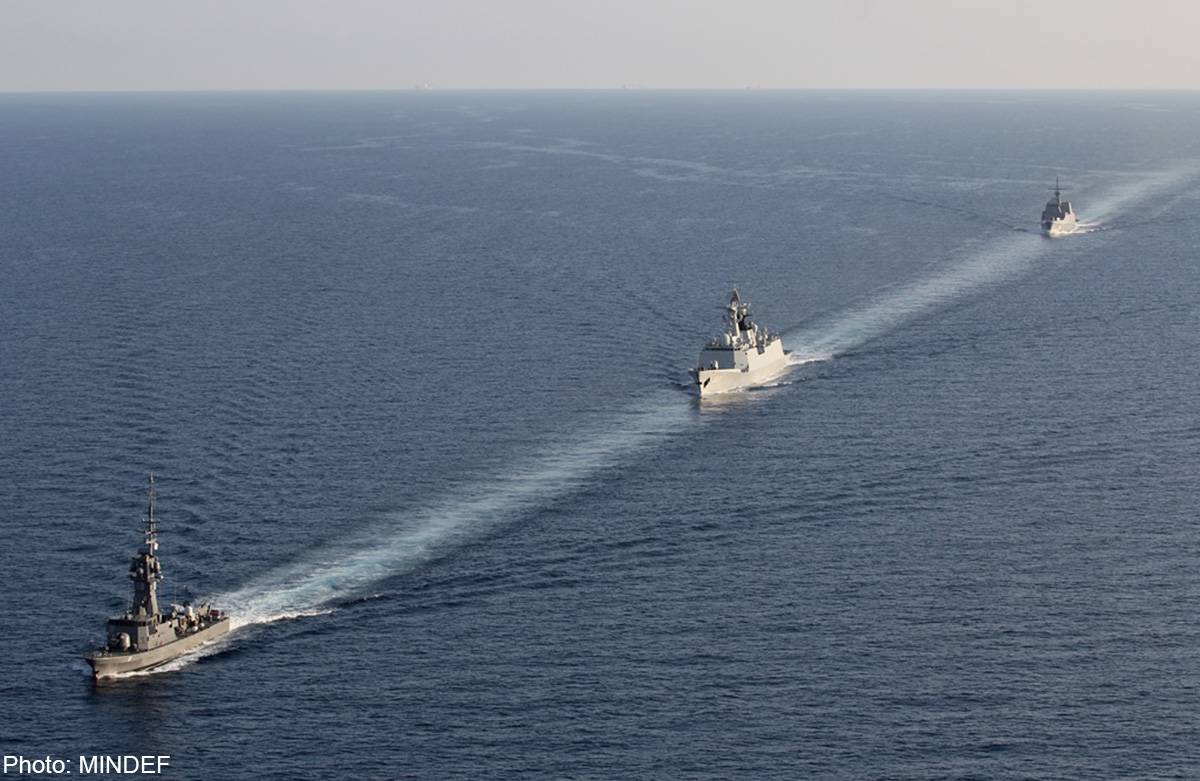Tensions are rising in the South China Sea after a US warship traveled through disputed waters. Washington says it’s protecting freedom of navigation, but China calls the American naval maneuver a provocation.
After months of observation, the United States made its move. The USS Lassen, a guided-missile destroyer, passed within 12 nautical miles (22 kilometers) of an artificial island built by Beijing in the South China Sea.
“We are asserting the principle of global commons,” Robert Daly, director of the Kissinger Institute on China and the United States, told DW. “These are international waters despite China’s very strong suggestions otherwise.”
The Chinese Foreign Ministry accused the USS Lassen of “illegally” entering the waters off the island, named Subi Reef, and called the maneuver a “deliberate provocation.” A Chinese guided-missile destroyer and naval patrol ship tracked the US warship. Beijing summoned the US ambassador.
China has kept its territorial ambitions in the South China Sea intentionally vague. While referencing historical claims to the so-called nine-dash line, a boundary that encompasses upwards of 85 percent of the South China Sea, China has never officially claimed sovereignty.
“Beijing wants to be sure it can defend whatever it claims,” Yun Sun, an expert on Chinese foreign policy at the Stimson Center, told DW. “Currently, China is not confident that it has the actual physical presence in the South China Sea to defend what it wants to claim.”
China has called the US’ sail-by near the artificial Spratly islands illegal and said it would respond to any deliberate provocations
Piecemeal approach
Instead of claiming the waters outright, Beijing has been asserting its position by turning reef and rock formations normally submerged by water into artificial islands with aircraft landing strips and deep-water ports for vessels. China has suggested that the islands are surrounded by a territorial sea of 12 nautical miles.
“We have never said China has done anything illegal,” Daly told DW, describing the US position on building the islands. “We have only said that anything built on a low-tide rock or reef that is underwater much of the time, it does not cast a territorial sea.”
Brunei, Malaysia, Vietnam, the Philippines, and Taiwan also have claims in the South China Sea and have watched China’s growing influence with concern. On Tuesday, the Philippines expressed support for the US move, calling it a restoration of the “balance of power.”
“The Philippines has a mutual defense treaty with the United States and Vietnam has also warmed up its military relations with the United States,” Vincent Wei-cheng Wang, an expert on Chinese foreign policy at the University of Richmond, told DW.
“They hope that by enlisting the United States in this bilateral situation with China that it can bolster their position,” Wang said.
Game of chicken
The dispute is about more than small islands. Thirty percent of global trade moves through the South China Sea’s shipping lanes, including Middle Eastern oil vital to the Chinese economy.
“China is very concerned that if a hostile external maritime power controls the waterway and decides to choke off the Chinese shipment, then China’s economic development may grind to a halt,” Wang said.
In this context, Beijing views the US naval presence as a potential threat to its national security, according to Sun.
“They don’t want the Americans to be there,” Sun said. “With these artificial islands, they are successfully pushing the Americans further out from China’s mainland.”
During Chinese President Xi Jinping’s visit to Washington in September, he said that Beijing had no intent to militarize the artificial islands.
“Has the United States now given China a pretext for going ahead and militarizing anyway?” Daly asked. “It’s going to be a long process of signaling, testing of limits, in effect kind of a game of chicken.”










